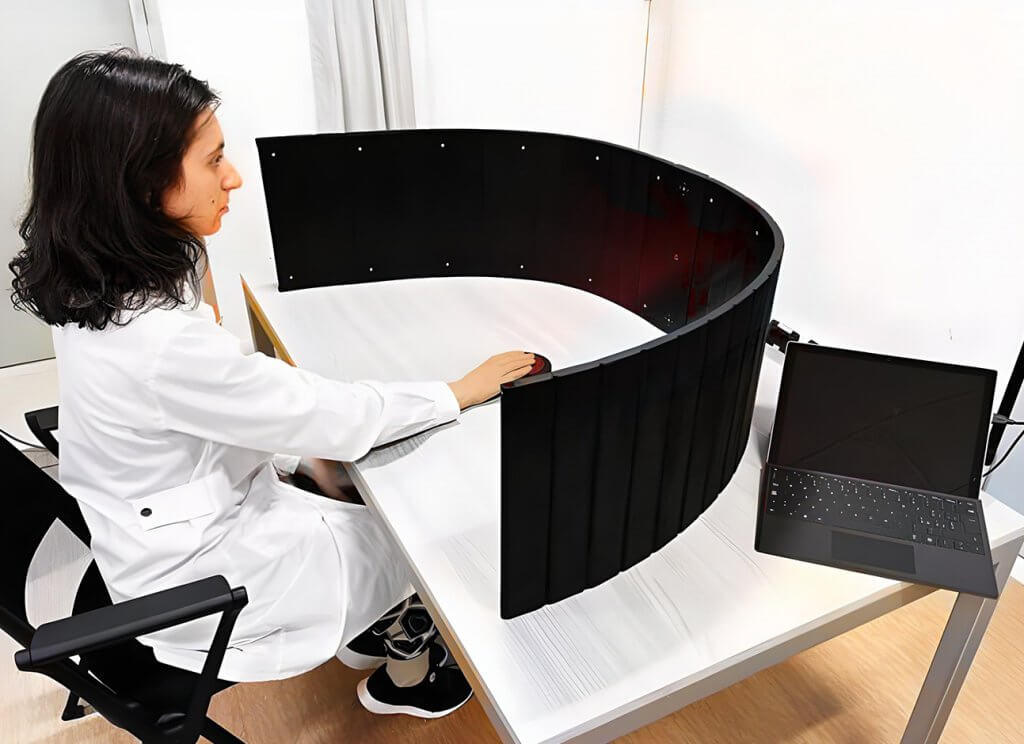Hemianopia: new research confirms the benefits of telerehabilitation with AvDesk
Telerehabilitation with AvDesk improves quality of life in patients with hemianopia, with effects comparable to those of in-person rehabilitation.
A recent study published in the Journal of NeuroEngineering and Rehabilitation, conducted by Prof. Nadia Bolognini and Drs. Carlotta Casati and Stefania Bianchi Marzoli, with contributions from Angela Rossetti and other colleagues (Bolognini et al., 20251) confirms the effectiveness of telerehabilitation in patients with acquired visual field defects, such as hemianopia.
The research evaluated the impact of audio-visual multisensory training (AVT) performed at home using the AvDesk medical device, produced and marketed by Linari Medical.

(Image taken from the study by Bolognini et al., 20251)
The study's methodology
Hemianopia is a condition that drastically reduces the ability to perceive visual space on one side, impairing daily activities such as reading, mobility, and personal autonomy. After a stroke or brain injury, spontaneous recovery occurs in the first few months, but after this period, rehabilitation becomes crucial to develop effective compensatory strategies.
The study involved 26 adults with chronic hemianopia who performed a remotely supervised home training protocol for three weeks using AvDesk. The device has light and sound units, placed on a semicircular panel designed to stimulate the compromised visual field through gaze orientation exercises.
The results were compared to those of a group of 16 patients who followed the same protocol in-person, at a health care facility. Outcomes were measured in terms of improvement in visual search, reading speed and quality of daily life.
Outcomes: sustainable improvements over time
The analysis showed that home treatment with AvDesk is as effective as in-person rehabilitation. Patients showed significant improvements in their ability to explore the visual field, read faster, and face daily tasks with greater confidence.
The positive effects were maintained for up to six months after the end of treatment.
Also relevant data concerns improved psychological well-being: participants reported a reduction in depressive symptoms, suggesting that the increased autonomy and effectiveness of rehabilitation have a positive impact on emotional state.
A step ahead for visual rehabilitation
This study provides a confirmation of the effectiveness of telerehabilitation for visual disorders and emphasizes the potential of AvDesk as an infungible tool for neuro-visual rehabilitation. By training in a familiar environment, without the need to come to a hospital facility, patients can improve their quality of life with more accessible and personalized treatment.
To learn more about the research, details can be found on the dedicated page.
1 Bolognini, N., Diana, L., Rossetti, A. et al. Telerehabilitation for visual field defects with a multisensory training: a feasibility study. J NeuroEngineering Rehabil 22, 34 (2025). https://doi.org/10.1186/s12984-025-01573-4.